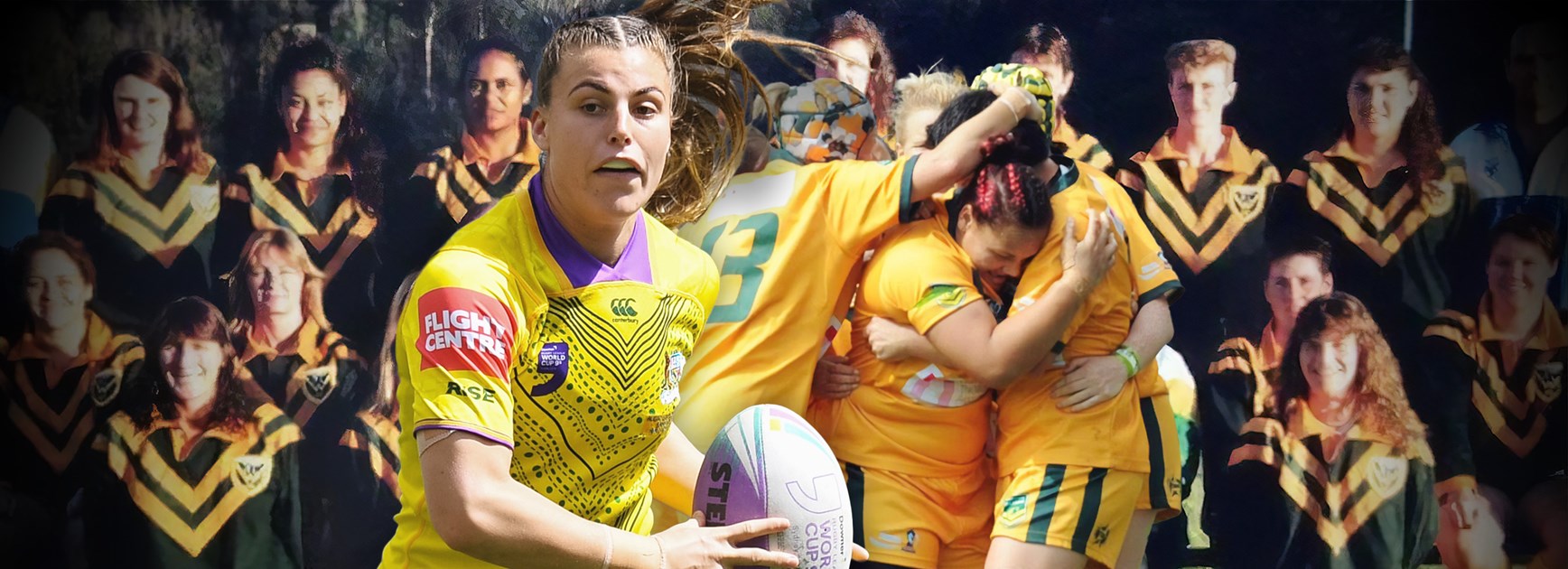
They slept in backpacker hostels and scout halls before games, self-diagnosed injuries and relied on family to deliver home-cooked food.
They're the stories of sacrifice behind women's rugby league players and how those early pioneers put the game on the map.
"Sitting here now in a fancy hotel and it's a big difference to what we experienced back then," former captain and now Jillaroos assistant coach Karyn Murphy told NRL.com.
"There were small steps when I was playing but now definitely giant strides in the last few years."
It's fair to say a lot has changed in the past 20 years.
The Jillaroos are now playing and training on lavish grounds with skin-tight jerseys, gym facilities, GPS tracking, access to all forms of recovery including physiotherapy, swimming and massage in five-star hotels across week-long camps.
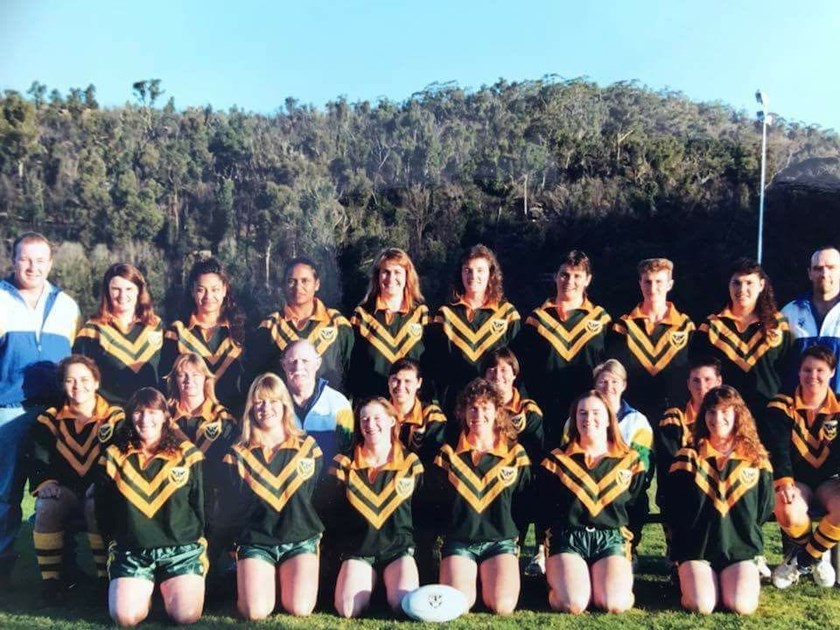
It's a far cry from when Murphy recalled one experience of turning up to a field and having to help ground staff remove plastics and glass bottles from the ground they were expected to play a Test match on just hours later.
Everyone involved in the women's game from past players, coaches, staff and families, have played a part.
It's why there are canvases at every Jillaroos camp recognising the past – all 152 names, their back stories, and old newspaper clippings which sometimes featured sexist coverage of the women's game.
The early days
When you dive in and explore the history of women's rugby league in Australia you'll find a lot of untold and not-so clear cut stories that require investigation.
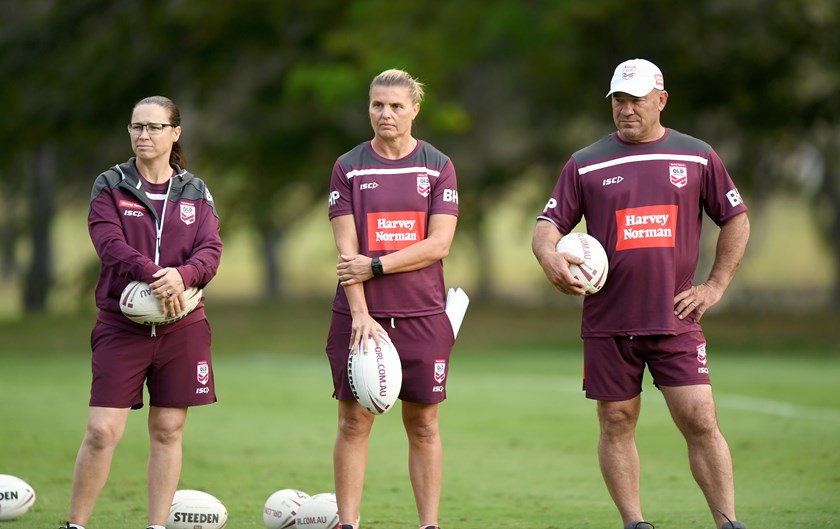
Everyone has their own version of events, from when the first Australian team formed to who should be wearing the jersey today.
The Australian women's rugby league was established in 1993 but wasn't made official until 1995 in line with the ARL governing body taking over the men's NSWRL competition.
The 1995 Australian team was officially announced as the first national side with Jillaroos playing numbers beginning from that year – among the names in the inaugural team included Nat Dwyer, Veronica White, Tarsha Gale and Katrina Fanning.
According to many involved, it was important that players who represented Australia between 1993-95 were also acknowledged as part of a foundation team.
This came despite the way in which those sides were chosen.
Rather than an open selection process it was more of a local team pulled together and given the title as the Australian team.
"I feel that we get spoken about a lot when there was a whole other era before us," Murphy said.
"It's important to recognise those girls who did the hard yards before us as well around the 1993 era.
"The setbacks and things they went through, the stories they tell are just as incredible."
Gathering momentum
It wasn't until 1999 that the things really began to kick off with the introduction of the women's interstate challenge, a concept replaced by State of Origin.
Queensland went on an incredible 17-year winning streak that finally came to an end in 2016.
There were small steps when I was playing but giant strides in the last few years
Jillaroos great Karyn Murphy
"It was all NSW at the start – they were the favourites in 1999," Murphy said.
"They had the players people knew about – Tarsha Gale, Nat Dwyer, Katrina Fanning. Queensland were a bunch of unknowns starting out.
"Over time there's been plenty of tight matches where Queensland only just got NSW on the bell.
"It added to the rivalry and now the shoe is on the other foot. Queensland is really hurting now.
"Even looking at Australian camp now it's mainly NSW dominated."
What is a Jillaroo?
The Jillaroo naming mystery
One subject that has brought up conflicting stories is around which year the Jillaroos name was affixed to the Australian team.
Gale says she retired in 2000 and is convinced the word Jillaroo had already been added but fellow Jillaroo Annie Banks's recollection differs.
Along with former teammate Veronica White, the pair were part of a board that settled on the name.
"You didn't have to convince the ARL back then because we sat beside them in separate governances so were able to run our own show," Banks said.
"We used it as a trading name before moving it officially. I got the name trademarked and then we moved it through the governing body.
"Veronica and I were discussing most of it. It took a while to convince Ronny to get the name but I just kept using it and it stuck.
"No one was really around to argue the point. We could only get together as a playing group once a year to play because of costs and everyone lived so far away so a lot of discussions were through conferences.
"It was an executive decision and [things] went from there."
A Jillaroo is a "young woman in training on a sheep or cattle station in Australia" – the female equivalent to a jackaroo.
- The fear driving Ali Brigginshaw
- Jillaroos v Kiwi Ferns match preview
- Kiwi Ferns insist Jillaroos have their respect
During war-time periods in Australia in the first half of the 20th century, it was women who took over traditionally male-only occupations, which in rugby league terms suits the women's game to a tee with the acceptance of females playing the contact sport growing in the past decade.
"There were a lot of animal names thrown out there when we were discussing, which is obviously typical for team names," Banks said.
"We thought well we're the counterpart of the Kangaroos so what's the female version of that? It's a 'doe', and we thought we don't want to be known as that.
"We needed to find our own identity. I'm from the bush so had a long history with the Jillaroo.
"Jillaroo symbolises the quick, essential Australian girl. It incorporates everything we identified as and covers indigenous and non-indigenous girls, hardworking and honest – the salt of the earth people of Australia.
"We could identify as people back then being pioneers of the sport.
"It came about through a discussion that we needed to be branded with a stronger and standout brand other than the Australian women's rugby league team."
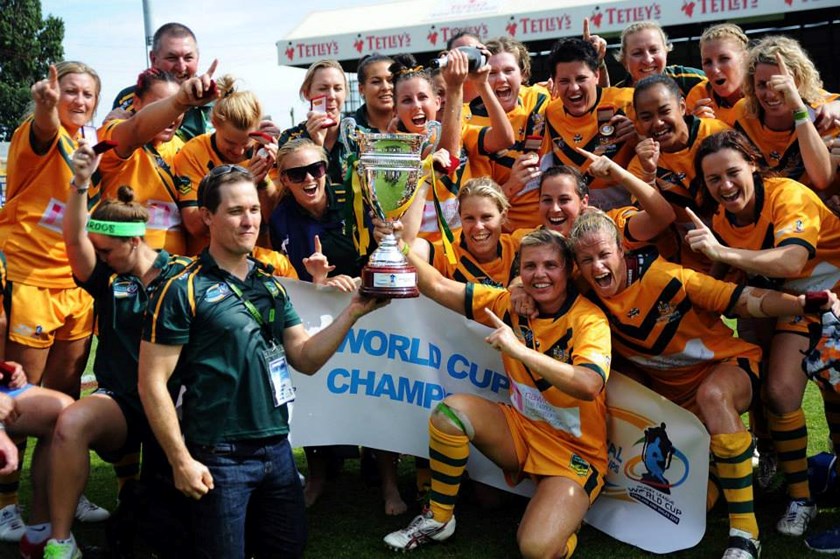
Conquering the Kiwi Ferns
The logo aside, the Jillaroos' biggest challenge was trying to conquer New Zealand in Test matches – a feat they spent two decades trying to achieve.
The Kiwi Ferns were, as Murphy described, virtually unbeatable for many years.
"It was terrible, we would pay to play knowing it was almost impossible to beat them," she said.
"They were too big, too strong, too fast. They had that confidence about them.
"We had a good relationship with them but we knew they were better than us. We'd compete hard but just never had it over them."
Former players and staff involved in the 2013 World Cup now look back and say that's where it all changed for the two-time world champions.
The Jillaroos found an unlikely ally in former NRL CEO Dave Smith, who pushed to have the side financially supported.
It marked the first year the national side played under the NRL banner and didn't have to make certain sacrifices like sell their cars, quit their jobs, organise raffles, auctions and further fundraising to get themselves on the plane to England.
"We paid for ourselves right up until that year," Murphy said.
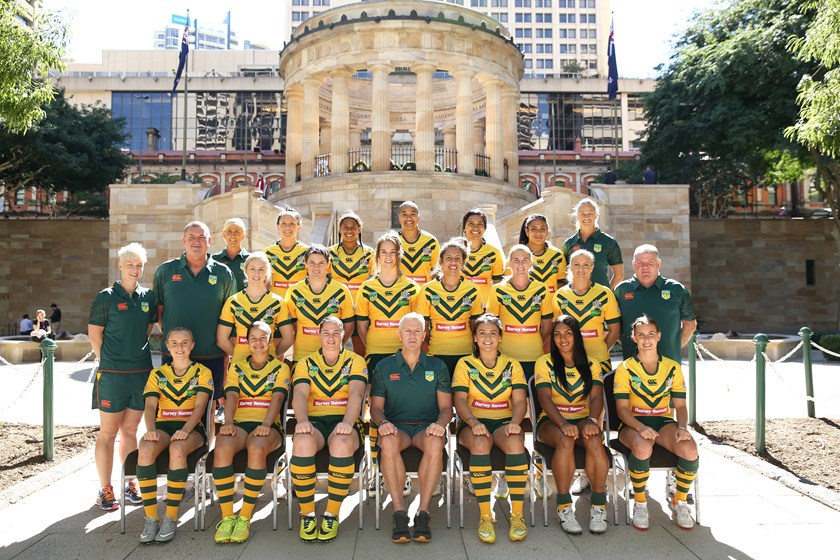
"Suddenly girls weren't having to pull out because of financial reasons. Not only players but staff and everyone involved with the team too."
With the off-field logistics on the improve, the Jillaroos jetted to the UK with a clear mind on their main mission; to break a drought and win the World Cup.
No surprise that reigning champions and heavy favourites New Zealand posed the biggest threat.
"Personally, and I can't speak for everyone, but I just had a good feeling leading into the tournament," Murphy said.
"The coaching staff were great and we were a tight group. I thought it was now or never, especially in my time."
The Jillaroos turned around an eight-point loss to the Kiwi Ferns just two days earlier to run out 22-12 winners in the World Cup final.
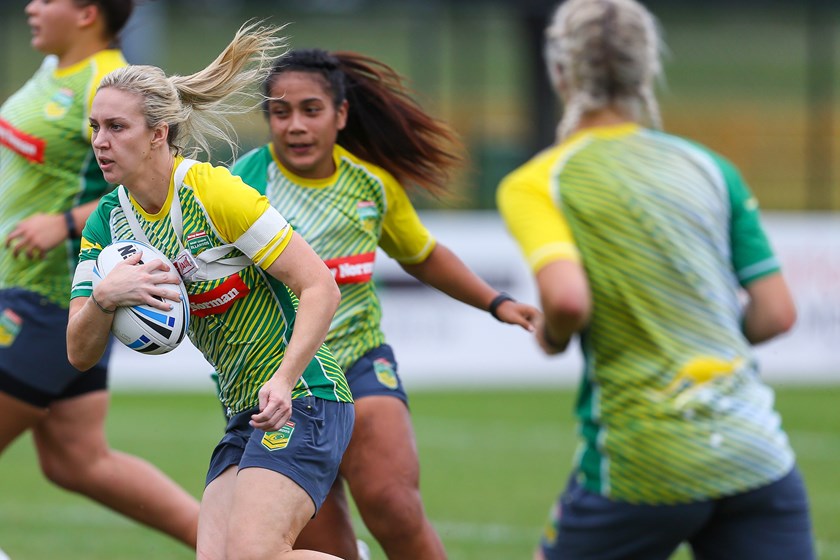
The result was made more special following the tragic news their coach Graham Murray had passed away from a heart attack a short time after their triumph.
Murray was unable to travel with the squad for the tournament due to ill health and his legacy continues to live on through the Jillaroos' setup.
He was the first coach with NRL experience to lead and publicly back the women's team in their history.
At last, being paid to play
Murphy retired following the World Cup after she captained Australia in 17 of her 27 Test appearances.
In 2014, the Jillaroos players became the first women's team to get paid for playing a Test match - an estimated $500 per game.
Five years later and the evolution of the women's game continues.
Yes, there are still teething issues. Players, staff and family continue to make sacrifices around their work and family commitments.
Managing player workload is suddenly a discussion, along with how to get future financial payments right in accordance with the level of skill on display.
Those conversations leave past players Murphy, Banks and Gale beaming, but also a little envious.
Boyle: You don't lose; you learn
How would the Australian team of 20 years ago line up against the current crop of Jillaroos?
"They might be able to tackle a little bit better because they'd be able to hold onto our triple size jerseys, there were no skin-tight back then," Banks laughed.
"But the ability to prepare for a Test match and select for a Test match has improved obviously.
"Our selectors back then didn't have the ability to fly around to games to select the correct players and not everyone could afford to go.
"That's a key component in comparing. I don't think the physicality has changed much. Our forwards might've had more size and speed but you can't measure determination.
"Both groups were and are outstanding and classy in their own way in a different era and platform."
Jillaroos call up a shock for Penitani
Murphy added it was important Australia's recent dominance continued against the Kiwi Ferns and in the women's game.
"I think Australia has got the opportunity and depth now to stay number one and try to reverse what they did to us for so many years," she said.
"We try to get around and tell them what it was like. They need to stay on top. These Test matches, you don't have a whole lot of them. You don't want to give them a sniff.
"This current group is great and Brad Donald, since he's come into the fold has made sure the girls understand the history.
"There's 152 Jillaroos names on the board and the girls get to know the history of the players.
"They want to know the history and get emotional hearing about it. It's important they know but also important moving forward they create their own."




